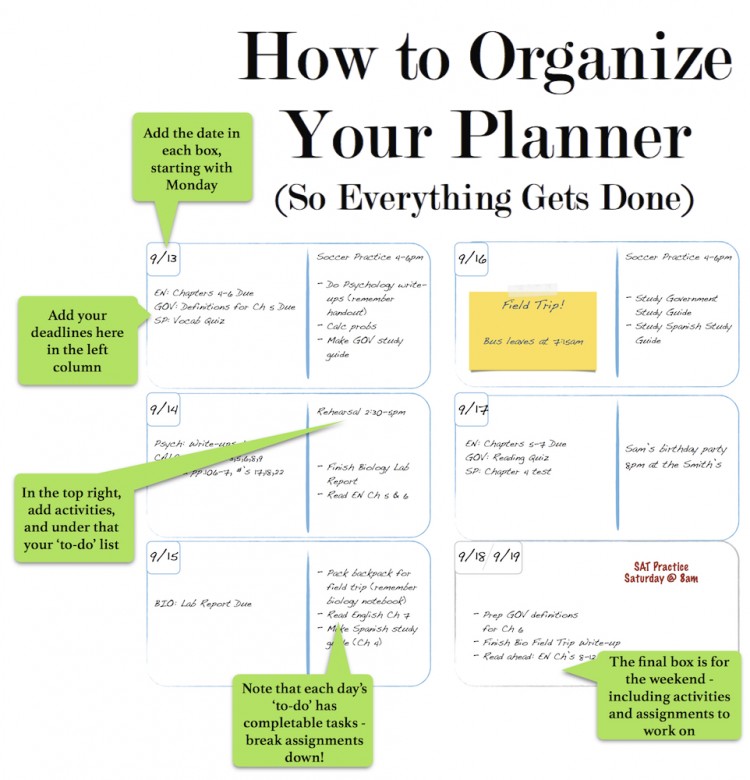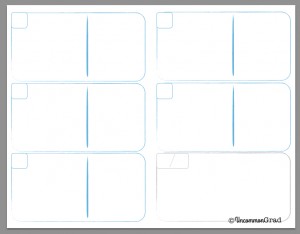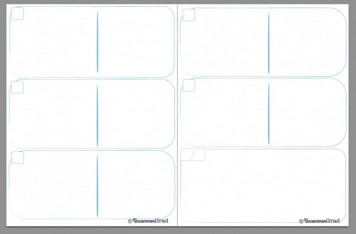Balancing school work, deadlines, and life can be difficult, and if you are unorganized it’s all the harder. I thought today I’d share how I organize my planner/calendar. The trick is not to think in terms of assignments, but in terms of deadlines. (And to use my two-column method.) Whether you use a physical planner, an online calendar, or an app, it’s up to you – this method will work in any format.

The left hand column or the “Deadline” column:
If you receive all your assignments ahead of time (in a syllabus at the start of each semester for example) input all the due dates in your calendar. Go ahead, I’ll wait. If not, add assignment deadlines as you receive them. Choose a shorthand and stick with it. If Honors Spanish III assignments are labeled as “SP”, be consistent. It matters for your sanity!
Also label all examinations – tests, quizzes, presentations, whatever – in the same left column. Preferably above the deadlines if you can. Never be surprised by a quiz again!
The right hand column or the “What assignments I should be working on today” column:
The right hand side is for your planning purposes – what assignments need to be worked on/completed that night and what studying needs to be done. First always include any after school activities that are occurring (ie. Soccer Practice or Art Club). Next include your day’s “to-do” list. I found that always ensuring the items listed in the right hand column were completable tasks made a world of difference. Break down assignments! No one says that just because you have to work on your English term paper means that you task yourself with “work on EN paper” – that’s not helpful to you or your ability to judge how long the task will take and to manage your time effectively. “Outline 1st 1/2 of EN paper” is something you can actually check off your list and might have a realistic expectation as to how long you should dedicate to completing it.
My suggestion is to always do this ahead of time for large assignments like research papers or presentations. Look at your assignments and break them down into completable tasks. Then schedule them, keeping in mind an extra day or two as buffer days just in case. Life happens.
Here’s my free planner for you to use:
A note on format – I suggest a physical planner for high school, preferable one that uses a week format. Many schools don’t allow electronic devices (or at least limit their use) during the school day. High school students need access to their calendar all day, to make additions, edit plans, etc. Universities are normally less strict and I’ve had a lot of success with both using Google Calendar (free) and education apps like iStudiezPro (paid).
While this level of planning may seem extreme, it’s what proved the best way to not only get everything done on time, but actually have some free time. Time management is something everyone struggles with, especially with the number of activities and commitments everyone has. But making deadlines for assignments – and college or job applications – may be the difference between just getting a grade and making the grade.



